#Zinc-fortified wheat
Text
The Guardian: Vegetables are losing their nutrients. Can the decline be reversed?


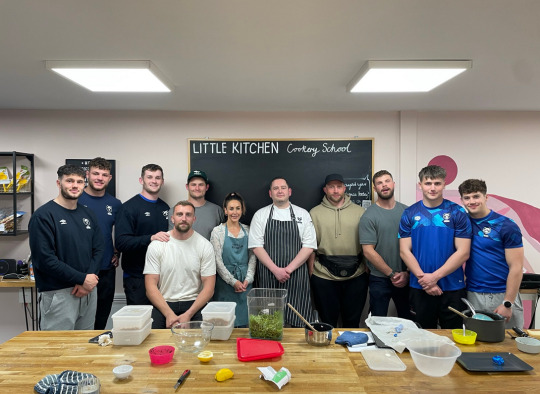
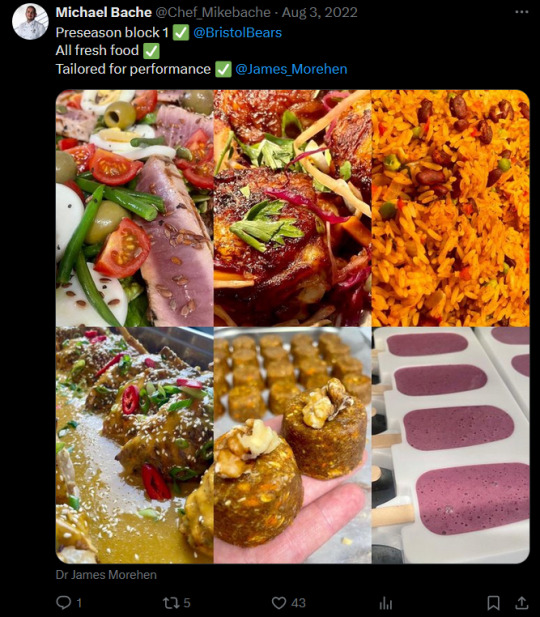





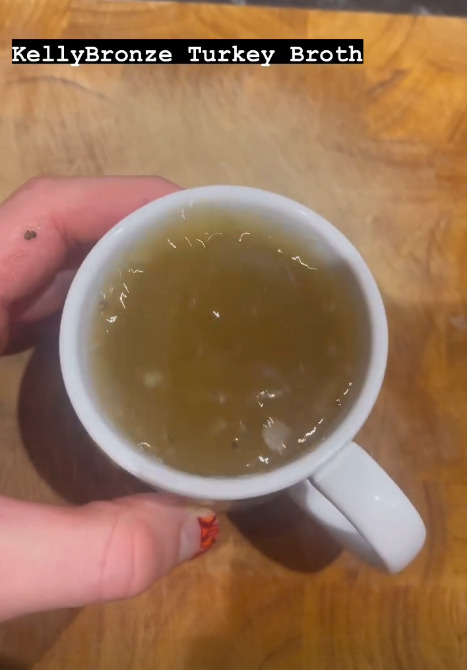









youtube


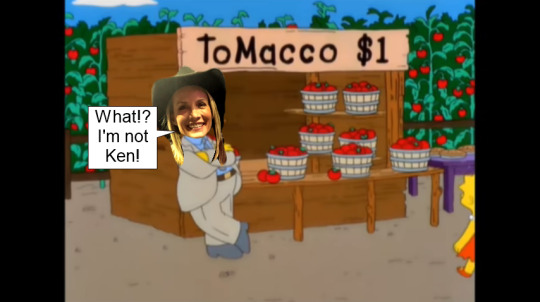
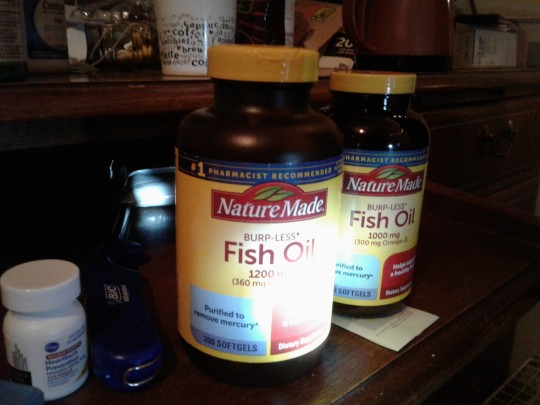

In 2004, Donald Davis and fellow scientists at the University of Texas made an alarming discovery: 43 foods, mostly vegetables, showed a marked decrease in nutrients between the mid and late 20th century.
According to that research, the calcium in green beans dropped from 65 to 37mg. Vitamin A levels plummeted by almost half in asparagus. Broccoli stalks had less iron.
Nutrient loss has continued since that study. More recent research has documented the declining nutrient value in some staple crops due to rising atmospheric carbon dioxide (CO2) levels; a 2018 study that tested rice found that higher CO2 levels reduced its protein, iron and zinc content.
Biofortification encompasses multiple technologies. One involves genetically modifying a crop to increase its nutritional contents, which allows for the rapid introduction of new traits. Another, agronomic biofortification, utilizes nutrient-rich fertilizers or soil amendments to concentrate particular minerals in plants. Lastly, selective plant breeding can produce new varieties, though it can take a decade or more to yield a single variety.
Biofortification is an alternative to fortification, which has been part of the US industrial food system since the 1920s, when the nation began boosting table salt with iodine to reduce conditions related to mineral deficiency, such as goiter. Biofortification puts nutrients directly into the seed, as opposed to fortification, which adds nutrients into food once it’s grown. On the global stage, international stakeholders such as the World Health Organization (WHO) and the Consultative Group on International Agricultural Research (CGIAR) have deemed the development of nutrient-enhanced biofortified crops as one of their leading goals in achieving food security.
Prateek Uniyal, program lead at the International Food Policy Research Institute (IFPRI), explained that “because of climate change, iron and zinc have been dipping by 30-40% due to excessive rainfall, cold and physical damage”.
HarvestPlus is an organization under IFPRI, and it provides global leadership on biofortification evidence and technology. It is currently working with governments in more than 30 countries, and its biofortified varieties have been planted by more than 100 million farmers across the world, predominantly in developing countries. By 2030, the organization estimates, 1 billion people will be benefiting from biofortified foods. “We’re about 20 years into a 40-year program,” said Jenny Walton, head of commercialization and scaling at HarvestPlus. “We’re trying to revolutionize staple food systems.”
While malnutrition demonstrates the urgent need to increase the nutrient density of crops globally, Benjamin Cohen, professor of environmental studies at Lafayette College, points to biofortification as a Band-Aid, rather than a solution to the problem.
“My concerns are about funders, based on policymakers, choosing to invest in biofortification instead of supporting more enduring smallholder models of farming that could be more efficient and resilient than large-scale systems,” said Cohen. “Promoting biofortification suggests solving a problem that should not exist if not for large-scale, capital-intensive agriculture. It’s likely that those same agricultural processes would only be further entrenched with biofortification.”
HarvestPlus sees plant breeding as the most sustainable way of biofortifying; it relies on existing plant genes. The organization works exclusively with staple crops and is developing them to contain higher amounts of vitamin A, iron and zinc, three micronutrients identified by the WHO to be the most deficient in diets globally. That approach means that in places such as Pakistan, where diets are wheat-heavy, fortifying that grain could make population-level change. HarvestPlus has already released 400 varieties of staple crop; none of them are patented.
But there are other concerns that nutrients are being lost at a broader scale than biofortification can replace.



0 notes
Text
Top 12 Zinc Rich Foods To Include In Your Regular Diet
Incorporate These 12 Zinc-Rich Foods Into Your Daily Diet
1. Shellfish
Shellfish, such as oysters, crab, and lobster, are among the most excellent sources of zinc. Oysters, in particular, are incredibly rich in zinc, with just a few providing more than the recommended daily allowance. Adding shellfish to your diet not only boosts your zinc intake but also provides other essential nutrients like protein and omega-3 fatty acids.
2. Meat
Various types of meat, including beef, pork, and lamb, are rich sources of zinc. Opting for lean cuts of meat ensures that you get the benefits of zinc without excessive saturated fat intake. Incorporating meat into your meals provides not only zinc but also high-quality protein, iron, and other essential nutrients.
3. Poultry
Chicken and turkey are excellent sources of zinc, making them valuable additions to a balanced diet. Whether grilled, roasted, or sautéed, poultry dishes offer versatility and flavor while providing a significant amount of zinc along with other essential nutrients.
4. Legumes
Legumes like chickpeas, lentils, and beans are not only rich in plant-based protein but also contain zinc. Incorporating legumes into your diet, whether in soups, salads, or main dishes, is an excellent way to increase your zinc intake while enjoying their fiber and micronutrient content.
5. Seeds
Pumpkin seeds, hemp seeds, and sesame seeds are all rich in zinc. Snacking on seeds or adding them to salads, yogurt, or oatmeal can provide a tasty and convenient way to boost your zinc levels while enjoying their crunchy texture and nutty flavor.
6. Nuts
Certain nuts, such as cashews, almonds, and pine nuts, contain zinc and can be included in your diet to help meet your daily requirements. Whether eaten as a snack or added to dishes like stir-fries or baked goods, nuts offer a nutritious and flavorful way to increase your zinc intake.
7. Dairy
Dairy products like milk, cheese, and yogurt contain zinc and are valuable sources of this essential mineral. Including dairy in your diet not only provides zinc but also offers calcium and protein, which are vital for bone health and muscle function.
8. Whole Grains
Whole grains such as wheat, quinoa, and oats contain zinc, albeit in smaller amounts compared to other sources. Choosing whole grain options over refined grains can contribute to your overall zinc intake while providing fiber and essential nutrients.
9. Eggs
Eggs are not only a versatile and affordable protein source but also contain zinc. Whether scrambled, boiled, or incorporated into dishes like omelets or frittatas, eggs are an excellent addition to your diet to increase your zinc intake.
10.Dark Chocolate
Surprisingly, dark chocolate contains zinc along with other beneficial antioxidants. Enjoying a square or two of dark chocolate as an occasional treat can contribute to your overall zinc intake while satisfying your sweet tooth.
11.Vegetables
Certain vegetables like spinach, kale, and mushrooms contain zinc and can be included in your diet to boost your intake of this essential mineral. Incorporating a variety of vegetables into your meals ensures you receive a diverse array of nutrients, including zinc.
12.Fortified Foods
Some foods are fortified with zinc to enhance their nutritional value. Examples include breakfast cereals, bread, and plant-based milk alternatives. Incorporating fortified foods into your diet can be a convenient way to increase your zinc intake, especially if you have dietary restrictions or preferences.
Final thoughts
Ensuring an adequate intake of zinc is essential for overall health and well-being. Thus, By including these zinc-rich food items in your regular diet, you can meet your body's needs for this vital mineral.
Additionally, maintaining a balanced and varied diet rich in nutrient-dense foods offers numerous health benefits beyond just zinc intake.
So, make it a habit to incorporate these zinc-rich foods into your meals and enjoy the delicious and nutritious benefits they provide.
Trying to have a diet that consists of all the essential vitamins and minerals you need for your well-being? Connect with our experienced nutritionist in Bangalore to start your path towards a healthier lifestyle today!
0 notes
Text
The Science Behind Great Hair - Insights from Coimbatore's Professionals
Stunning, healthy hair isn't just about appearances; it reflects your overall well-being and confidence. Understanding the science behind healthy hair and the essential nutrients it craves can make all the difference in maintaining vibrant and lustrous locks. This post will look into the fascinating world of hair health, revealing practical tips to keep your mane in top shape.
If you're in Coimbatore, don't miss out on exploring reputable hair treatment centers in Coimbatore for personalized care and expert advice tailored to your hair's unique needs.
The Science Behind Healthy Hair
Your hair's health is deeply rooted in science, with essential nutrients crucial in its growth and vitality. Let's explore some key elements.
Essential Nutrients for Hair Growth
1. Vitamin A:
Vitamin A is a powerhouse nutrient that promotes hair growth and prevents dryness and dullness. It aids in producing sebum, a natural oil that moisturizes the scalp and nourishes hair strands.
Sources: Sweet potatoes, carrots, spinach, kale, broccoli, and liver.
2. Biotin:
Also known as vitamin H, biotin is essential for healthy hair growth. It supports the production of keratin, the protein that forms the structure of hair—incorporating biotin-rich foods into your diet for stronger and thicker hair.
Sources: Eggs, nuts (such as almonds and peanuts), seeds (like sunflower seeds), avocados, and salmon.
3. Vitamin E:
As a potent antioxidant, vitamin E combats oxidative stress—a common culprit in hair loss and damage. It also enhances blood circulation in the scalp, ensuring essential nutrients reach the hair follicles.
Sources: Almonds, sunflower seeds, spinach, avocado, and wheat germ oil.
4. Iron:
Iron deficiency can result in hair loss and thinning. Including iron-rich foods like spinach, lentils, and lean meats can help maintain healthy iron levels, promoting optimal hair growth.
Sources: Spinach, lentils, tofu, fortified cereals, red meat, and poultry.
5. Zinc:
Zinc plays a vital role in the functioning of hair follicles and the production of new cells. It aids in the repair and growth of hair tissues, preventing hair loss and ensuring healthy growth.
Sources: Oysters, beef, lamb, pumpkin seeds, chickpeas, and cashews.
Practical Hair Care Tips:
In addition to nourishing your hair from within with essential nutrients, adopting practical hair care habits can further enhance its vitality:
- Practice gentle shampooing to avoid stripping your hair of its natural oils.
- Enjoy regular scalp massages to stimulate blood flow and promote hair growth.
- Protect your hair from heat damage by using heat protectant products and minimizing heat styling.
- Embrace a balanced diet and avoid excessive styling and harsh chemicals to maintain healthy hair.
Conclusion
Achieving and maintaining healthy, beautiful hair is within reach when you understand its science and provide your locks with the essential nutrients they crave. By incorporating vitamins like A, E, and biotin, along with minerals like iron and zinc, and practicing practical hair care tips, you can unleash your hair's full potential and enjoy a radiant crown of beauty. Start nourishing your hair from within today, and watch as your locks transform into a gorgeous masterpiece.
For those ready to embark on a transformative journey to restore their crowning glory, Keva Hair Care awaits. With a promise of unparalleled excellence, it is the beacon of hope for many.
Keva Hair Care
Address: No 424K 3rd Floor, Harmony Complex, Diwan Bahadur Rd, above ICICI Bank, above Pandiyan Medicals, R.S. Puram, Coimbatore, Tamil Nadu 641002
0 notes
Text
Healthy diet while breastfeeding 💎


Healthy diet while breastfeeding
Breastfeeding may lower your risk of developing certain medical conditions later in life, such as heart disease and diabetes. It may also help you feel more connected to your new baby and relieve stress. Everything is fine. It's critical to eat nutrient-dense, nourishing foods to help your breast milk production. Furthermore, eating healthy foods after childbirth can help you feel better both mentally and physically. Here is everything you need to know about a healthy diet while breastfeeding.
Choose breastfeeding foods that are high in nutrients
When you're breastfeeding your new baby, your hunger levels may be at an all-time high for a reason. Breast milk production is taxing on the body, necessitating more overall calories as well as higher levels of specific nutrients.
Your energy requirements during breastfeeding are estimated to increase by 500 calories. Every day, a dependable source. Specific nutrient requirements, such as protein, vitamin D, vitamin A, vitamin E, vitamin C, B12, selenium, and zinc, increase.
This is why eating a variety of nutrient-dense, whole foods is essential for your health and the health of your baby.
Priorities to consider when breastfeeding:
Salmon, seaweed, shellfish, and sardines are examples of fish and seafood.
Chicken, beef, lamb, pork, and organ meats (such as liver)
Berries, tomatoes, bell peppers, cabbage, kale, garlic, and broccoli are examples of fruits and vegetables.
Almonds, walnuts, chia seeds, hemp seeds, and flaxseeds are examples of nuts and seeds.
coconut, eggs, avocados, olive oil, and full-fat yogurt have high healthy fats.
Starches high in fiber include potatoes, butternut squash, sweet potatoes, beans, lentils, oats, quinoa, and buckwheat.
Tofu, dark chocolate, kimchi, and sauerkraut are some additional healthy diet while breastfeeding.
Change your breastfeeding diet to include both nutrient groups
So, now that you understand why eating nutrient-dense foods is important when breastfeeding, let's delve a little deeper into why it's also important to pay special attention to specific vitamins and minerals.
The nutrients in breast milk are classified into two groups based on how much they are secreted into your milk. If you are deficient in any of the group 1 nutrients, they will not be secreted as readily into your breast milk. As a result, supplementing with these nutrients can increase their concentration in breast milk and thus improve your baby's health.
However, the concentration of group 2 nutrients in breast milk is unaffected by how much mom consumes, so supplementing will not increase your breast milk nutrient concentration. Nonetheless, replenishing nutrient stores can improve maternal health and you can add them to your healthy diet while breastfeeding.
Nutrients in Group 1
Here are the nutrients in Group 1 and where to find them in common foods:
Fish, pork, seeds, nuts, and beans are high in vitamin B1 (thiamin).
Riboflavin (Vitamin B2): cheese, almonds, nuts, red meat, oily fish, eggs
Chickpeas, nuts, fish, poultry, potatoes, bananas, and dried fruit are high in vitamin B6.
Shellfish, liver, yogurt, oily fish, nutritional yeast, eggs, crab, and shrimp are high in vitamin B12.
Choline-rich foods include eggs, beef liver, chicken liver, fish, and peanuts.
Sweet potatoes, carrots, dark leafy greens, organ meats, and eggs are high in vitamin A.
Vitamin D sources include cod liver oil, oily fish, some mushrooms, and fortified foods.
Brazil nuts, seafood, turkey, whole wheat, and seeds are high in selenium.
Iodine sources include dried seaweed, cod, milk, and iodized salt.
Nutrients in Group 2
Here are the nutrients in Group 2 and some common food sources:
Folate-rich foods include beans, lentils, leafy greens, asparagus, and avocados.
Calcium-rich foods include milk, yogurt, cheese, leafy greens, and legumes.
Iron-rich foods include red meat, pork, poultry, seafood, beans, green vegetables, and dried fruit.
Copper-rich foods include shellfish, whole grains, nuts, beans, organ meats, and potatoes.
Zinc-rich foods include oysters, red meat, poultry, beans, nuts, and dairy.
As previously stated, the concentration of group 2 nutrients in breast milk is unaffected by your dietary intake or body stores.
Think about taking supplements
Taking supplements can help you get more of the nutrients you need. We've compiled a list of essential supplements for breastfeeding mothers and those interested in promoting postpartum recovery in general.
Multivitamins
In order to supplement your diet with essential vitamins and minerals, multivitamins can help you.
It's common for women to be vitamin and mineral deficient after giving birth, and research shows that deficiencies don't discriminate, affecting moms in both high- and low-income households.
B-12 vitamin
Vitamin B-12 is a water-soluble vitamin that is critical for your baby's health as well as your own during breastfeeding.
Furthermore, many women, particularly those who eat mostly plant-based diets, have had gastric bypass surgery, and are taking certain medications (such as acid reflux medications), are already at a higher risk of having low B-12 levels.
DHA (Omega-3)
Omega-3 fats are popular these days, and for good reason. These fats, which are naturally found in fatty fish and algae, are important for both maternal and fetal health.
DHA, for example, is essential for the development of your baby's nervous system, skin, and eyes. Furthermore, the concentration of this important fat in breast milk is highly dependent on your intake levels.

Furthermore, studies show that babies who are fed DHA-rich breast milk have better vision and neurodevelopment outcomes.
D vitamin
Only a few foods contain vitamin D, including fatty fish, fish liver oils, and fortified products. It can also be produced by your body through sunlight exposure, though this depends on a variety of factors such as skin color and where you live.
Vitamin D levels in breast milk are typically low, especially when sun exposure is limited.
FAQ:
What foods should I avoid while breastfeeding?
Make healthy food choices to help fuel your milk production. Choose protein-rich foods such as lean meat, eggs, dairy, beans, lentils, and low-mercury seafood. Select a variety of whole grains, fruits, and vegetables.
What are some nutritious foods to eat while breastfeeding?
Veggies
Proteins
Whole grains
What is the most effective way to have a healthy diet while breastfeeding?
Aim for a diet high in fruits and vegetables while limiting empty carbs and junk food.
Read the full article
0 notes
Text
What are the highest Plant-Based Protein-Rich Foods?
A common concern about vegetarian and vegan diets is that they may lack sufficient protein. But vegans can get protein from various plant sources, though some may be better than others.
The vegan diet has been linked to several health benefits in terms of nutrients, weight loss, and a lower chance of various health problems. In fact, many experts agree that a well-planned meatless diet can provide all the nutrients you need, including protein.
However, certain plant foods contain significantly more plant protein than others, and research suggests that higher protein diets can promote muscle strength, feelings of fullness, and weight loss.
In addition, while well-planned vegan diets made up of mostly minimally processed foods are considered beneficial for all stages of life, those including large amounts of ultra-processed plant foods are not.
Poorly planned or highly processed vegan diets may increase your chance of developing nutrient deficiencies, especially in vitamin B12, iodine, iron, calcium, zinc, and long-chain omega-3s.
The following are 18 protein-rich foods that contain a high amount of protein per serving. That said, speak with your doctor to see if you can benefit from supplements and fortified foods to bridge any nutritional gaps that might arise.
Learn more about the food with rich in protein and high protein foods and vegetables.
1. Seitan
Seitan is a popular protein source for many vegetarians and vegans. Unlike many soy-based mock meats, it closely resembles the look and texture of meat when cooked.
Also known as wheat meat or wheat gluten, it contains about 25 grams (g) of protein per 3.5 ounces (oz) or 100 g, making it one of the richest plant protein sources available.
Seitan is also a good source of selenium and contains small amounts of iron, calcium, and phosphorus. However, because it’s made from gluten, the main protein in wheat, people with gluten-related disorders should avoid it.
2. Tofu, tempeh, and edamame
Tofu, tempeh, and edamame all contain iron, calcium, and 12–20 g of protein per 3.5 oz (100 g) serving.
All three originate from soybeans, which are considered a whole source of protein, providing your body with all the essential amino acids it needs.
Edamame is also rich in folate, vitamin K, and fiber, which can help support digestion and regularity.
On the other hand, tempeh contains probiotics, B vitamins, and minerals, such as magnesium and phosphorus.
3. Lentils
With 18 g of protein per cooked cup (198 g), lentils are a great source of protein and fiber, providing over half of your recommended daily fiber intake in a single cup (198 g).
Furthermore, the type of fiber found in lentils has been shown to feed the good bacteria in your colon, which can help promote a healthy gut. Lentils may also reduce your chance of heart disease, diabetes, excess body weight, and certain types of cancer.
In addition, lentils are rich in folate, manganese, iron, antioxidants, and other health-promoting plant compounds.
4. Beans
Kidney, black, pinto, and most other varieties of beans are extremely important staple foods across cultures and contain high amounts of protein per serving. This also includes chickpeas.
Most types of beans contain about 15 g of protein per cooked cup (170 g). They’re also excellent sources of complex carbs, fiber, iron, folate, phosphorus, potassium, manganese, and several beneficial plant compounds.
Moreover, research shows that a diet rich in beans and other legumes can help decrease cholesterol levels, manage blood sugar, lower blood pressure, and even reduce belly fat.
5. Nutritional yeast
Nutritional yeast is a deactivated strain of Saccharomyces cerevisiae yeast, which is sold commercially as a yellow powder or flakes.
Half an oz (16 g) of this complete source of plant protein provides 8 g of protein and 3 g of fiber. Fortified nutritional yeast is also an excellent source of zinc, magnesium, copper, manganese, and all the B vitamins, including vitamin B12.
6. Spelt and teff
Spelt and teff belong to a category known as ancient grains. Other ancient grains include einkorn, barley, sorghum, and farro.
Spelt is a type of wheat and contains gluten, whereas teff originates from an annual grass, meaning that it’s naturally gluten-free.
Spelt and teff provide 10–11 g of protein per cooked cup (250 g), making them higher in protein than other ancient grains.
Both are excellent sources of various nutrients, including complex carbs, fiber, iron, magnesium, phosphorus, and manganese. They also contain B vitamins, zinc, and selenium.
7. Hemp seeds
Hemp seeds come from the Cannabis sativa plant, which is sometimes maligned for belonging to the same family as the cannabis plant.
However, hemp seeds contain only trace amounts of tetrahydrocannabinol (THC), the compound that produces the psychoactive effects of cannabis.
Although hemp seeds aren’t as well-known as other seeds, they contain 9 g of protein in each 3-tablespoon (tbs) or 30 g serving.
They also contain high levels of magnesium, iron, calcium, zinc, and selenium. What’s more, they’re a good source of omega-3 and omega-6 fatty acids in the ratio considered optimal for human health.
Interestingly, research indicates that the type of fats found in hemp seeds may help reduce inflammation and alleviate symptoms of menopause and certain skin conditions.
8. Green peas
Green peas contain nearly 9 g of protein per cooked cup (160 g), which is slightly more than a cup (237 milliliters (mL)) of dairy milk.
What’s more, a serving of green peas covers more than 25% of your daily fiber, thiamine, folate, manganese, and vitamin C and K needs.
Green peas are also a good source of iron, magnesium, phosphorus, zinc, copper, and several other B vitamins.
9. Spirulina
This blue-green algae is definitely a nutritional powerhouse. A 2 tbs (14 g) serving provides 8 g of complete protein, in addition to covering 22% of your daily requirements for iron and 95% of your daily copper needs (60).
Spirulina also contains high amounts of magnesium, riboflavin, manganese, potassium, and small amounts of most of the other nutrients your body needs, including essential fatty acids.
According to some test-tube and animal research, phycocyanin, a natural pigment found in spirulina, may have powerful antioxidant, anti-inflammatory, and anti-cancer properties.
Furthermore, research links consuming spirulina to health benefits ranging from a stronger immune system and reduced blood pressure to improved blood sugar and cholesterol levels.
Still, we need more human studies before we can draw conclusions on all of spirulina’s health claims.
10. Amaranth and quinoa
Although amaranth and quinoa are often referred to as ancient or gluten-free grains, they don’t grow from grasses like other cereal grains do. For this reason, they’re technically considered pseudocereal.
Nevertheless, similarly to more commonly known grains, they can be prepared or ground into flours.
Amaranth and quinoa provide 8–9 g of protein per cooked cup (246 g and 185 g respectively) and are complete sources of protein, which is uncommon among grains and pseudocereals.
They are also good sources of complex carbs, fiber, iron, manganese, phosphorus, and magnesium.
11. Ezekiel bread and other breads made from sprouted grains
Ezekiel bread is made from organic, sprouted whole grains and legumes. These include wheat, millet, barley, and spelt, as well as soybeans and lentils.
Two slices of Ezekiel bread contain approximately 8 g of protein, which is slightly more than most other types of bread.
Sprouting grains and legumes increases the number of healthy nutrients they contain and reduces their content of antinutrients, which are compounds that can affect your body’s absorption of certain vitamins and minerals.
In addition, studies show that sprouting increases their content of specific amino acids, such as lysine, which can help boost their overall protein quality.
12. Soy milk
Soy milk is made from soybeans and is usually fortified with vitamins and minerals. Not only does it contain 6 g of protein per cup (244 g), but it’s also an excellent source of calcium, vitamin D, and vitamin B12 (76).
However, keep in mind that soy milk and soybeans do not naturally contain vitamin B12, so picking a fortified variety is a good idea.
Additionally, some types may contain added sugar, so it’s best to opt for unsweetened varieties whenever possible.
13. Oats and oatmeal
Eating oats is an easy and delicious way to add protein to any diet.
Half a cup (40 g) of dry oats provides approximately 5 g of protein and 4 g of fiber. Oats also contain magnesium, zinc, phosphorus, and folate.
Although oats are not considered a complete protein, they do contain higher quality protein than other commonly consumed grains like rice and wheat.
14. Wild rice
Unlike white rice, wild rice is not stripped of its bran. That’s great from a nutritional perspective, as bran contains fiber and plenty of vitamins and minerals.
A cooked cup (164 g) provides nearly 7 g of protein, in addition to healthy amounts of fiber, manganese, magnesium, copper, phosphorus, and B vitamins.
15. Chia seeds
Chia seeds are derived from the Salvia hispanica plant, which is native to Mexico and Guatemala. They contain 5 g of protein and 10 g of fiber per ounce (28 g)
.
These little seeds also contain high levels of iron, calcium, selenium, and magnesium, as well as omega-3 fatty acids, antioxidants, and other beneficial plant compounds.
16. Nuts, nut butter, and other seeds
Nuts, seeds, and their derived products are great sources of protein.
One ounce (28 g) contains 5–7 g of protein, depending on the variety. For example, almonds contain 6 g.
Nuts and seeds are also great sources of fiber and healthy fats, along with iron, calcium, magnesium, selenium, phosphorus, vitamin E, and certain B vitamins. They likewise contain antioxidants, among other beneficial plant compounds.
When choosing which nuts and seeds to buy, keep in mind that blanching and roasting may damage the nutrients in nuts. Therefore, it’s best to eat them raw.
17. Protein-rich fruits and vegetables
Although all fruits and vegetables contain protein, some contain more than others.
Vegetables with the most protein include broccoli, spinach, asparagus, artichokes, potatoes, sweet potatoes, and Brussels sprouts, which typically contain 4–5 g of protein per cooked cup.
Although technically a grain, sweet corn is another common food that contains about as much protein as these high protein vegetables.
Fresh fruits generally have a lower protein content than vegetables. Those containing the most include guava, cherimoyas, mulberries, blackberries , nectarines, and bananas, which have about 2–4 g of protein per cup.
18. Mycoprotein
Mycoprotein is a non-animal-based protein derived from Fusarium venenatum, which is a type of fungus. It’s often used to produce meat substitutes, including veggie burgers, patties, cutlets, and fillets.
Its nutritional value can range a bit depending on the specific product, but most contain 15–16 g of protein per 3.5 oz (100 g) serving, along with 5–8 g of fiber.
Although there are concerns about the safety of mycoprotein related to food allergies, research shows that adverse reactions are very rare.
However, keep in mind that some products made with mycoprotein may also contain egg whites, so be sure to check the label carefully if you’re following a vegan diet or avoiding eggs for other reasons, such as food allergies.
Frequently asked questions
What vegan foods are high in protein?
Seitan, tofu, beans, and lentils can provide protein in a vegan diet.
How can a vegan get 100g of protein a day?
In order to get 100g of daily protein, a person following a vegan diet typically needs to vary their plant protein sources and include multiple protein sources in one meal. These can include seitan, which contains 25 g of protein per 3.5 oz (100 g), tofu, beans, and lentils, as well as foods that provide a smaller amount of protein, such as whole grains, nutritional yeast, and nuts.
What is a good source of protein that isn’t meat?
Some plant-based foods, such as soybean products, seitan, beans, and lentils contain high amounts of protein. You can also find protein in nuts, whole grains like quinoa and amaranth, and hemp seeds. People following a vegan diet may need to plan in order to reach their daily protein goals.
Conclusion
Protein deficiencies among vegetarians and vegans are uncommon, especially for those following a healthy, well-planned diet.
Still, some people may be interested in increasing their plant protein intake for a variety of reasons.
This list can be used as a guide for anyone interested in incorporating more plant-based proteins into their diet.
0 notes
Text
Valu Pak Dog Food
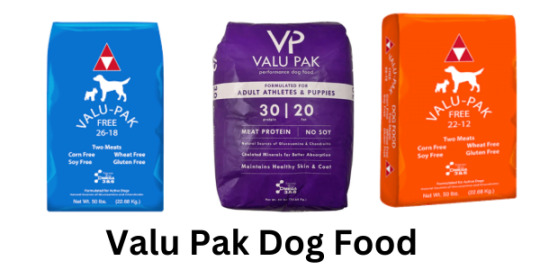
Ingredients and Nutritional Composition
Valu Pak Dog Food utilizes a blend of high-quality ingredients, carefully selected to provide dogs with essential nutrients for optimal health and vitality. The primary protein sources include chicken by-product meal, pork meal, and whole-grain brown rice, ensuring a steady supply of amino acids for muscle development and maintenance. Whole grain sorghum, a gluten-free grain, contributes complex carbohydrates for sustained energy levels.
Chicken fat, preserved with mixed tocopherols, serves as a rich source of energy and provides essential fatty acids for healthy skin and coat. Dried green peas and dried beet pulp (sugar removed) offer a boost of dietary fiber, aiding in digestion and promoting gut health. Ground flaxseed, a valuable source of omega-3 fatty acids, contributes to joint health and cognitive function.
Valu Pak Dog Food is fortified with a comprehensive array of vitamins and minerals, including calcium carbonate for bone health, potassium chloride for muscle function, and choline chloride for brain development. Essential trace minerals such as ferrous sulfate, zinc sulfate, zinc oxide, manganese sulfate, copper sulfate, sodium selenite, and cobalt carbonate are also incorporated to support various bodily functions.
Benefits of Valu Pak Dog Food
Valu Pak Dog Food boasts a multitude of benefits that contribute to the overall health and well-being of dogs:
Complete and Balanced Nutrition: Valu Pak Dog Food meets the nutritional requirements established by the Association of American Feed Control Officials (AAFCO) for all life stages, ensuring dogs receive the essential nutrients they need for optimal growth and development.
High Protein Content: The high protein content of Valu Pak Dog Food supports muscle development and maintenance, particularly crucial for active dogs and puppies in their growth phase.
Digestive Health: The inclusion of dietary fiber from whole-grain brown rice and dried beet pulp promotes healthy digestion and regular bowel movements, contributing to overall gut health.
Skin and Coat Health: The combination of chicken fat and ground flaxseed provides essential fatty acids that nourish the skin and promote a healthy, shiny coat.
Joint Health: Ground flaxseed, a rich source of omega-3 fatty acids, contributes to joint health and mobility, particularly beneficial for older dogs or those prone to joint issues.
Cognitive Function: Choline chloride, a component of Valu Pak Dog Food, plays a crucial role in brain development and cognitive function, supporting optimal mental health in dogs.
Potential Drawbacks
While Valu Pak Dog Food offers a range of benefits, there are a few potential drawbacks to consider:
By-Product Meal: The use of chicken by-product meal as a primary protein source may raise concerns among some pet owners. While by-product meals can be a valuable source of nutrients, it’s important to ensure the by-products are sourced from healthy animals and processed appropriately.
Corn, Wheat, and Soy-Free: Valu Pak Dog Food is formulated without corn, wheat, or soy, which may be beneficial for dogs with sensitivities to these ingredients. However, it’s essential to note that these grains are not inherently harmful and can provide valuable nutrients when used appropriately.
Read More This Article Click =>>
#tumblr trends#dog#dog food#Valu Pak Dog Food#valu pak#animals food#food review#animals#usa#america dog#dogs
0 notes
Text
Understanding Macronutrients And Nutrient Dense Foods
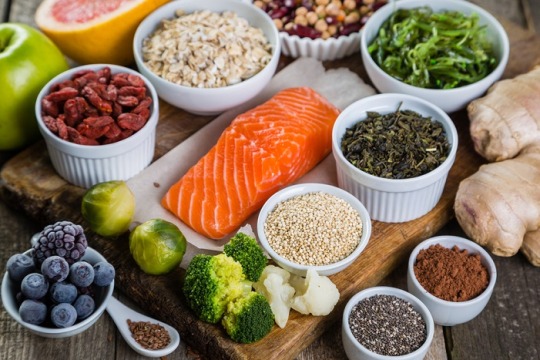
The appropriate balance of macronutrients (carbohydrates, proteins, and fats) varies for each individual based on factors such as age, sex, activity level, health status, and specific health goals. However, there are general guidelines recommended by health organizations like the World Health Organization (WHO) and the Dietary Guidelines for Americans that can serve as a starting point for most people seeking to maintain optimal health.
Carbohydrates:
Carbohydrates are the body's primary source of energy. They should constitute approximately 45-65% of your total daily calorie intake. Focus on complex carbohydrates such as whole grains, fruits, vegetables, and legumes, which provide fiber, vitamins, and minerals. Limit refined carbohydrates and sugars found in processed foods, sugary beverages, and sweets.
Proteins:
Proteins are essential for building and repairing tissues, including muscles, enzymes, and hormones. They should make up about 10-35% of your total daily calorie intake. Opt for lean protein sources like poultry, fish, beans, lentils, tofu, and low-fat dairy products. Including a variety of protein sources ensures you get a diverse range of amino acids, the building blocks of proteins.
Fats:
Healthy fats are important for brain health, hormone production, and the absorption of fat-soluble vitamins (such as A, D, E, and K). They should constitute about 20-35% of your total daily calorie intake. Focus on unsaturated fats found in sources like avocados, nuts, seeds, olive oil, and fatty fish. Limit saturated fats found in fatty cuts of meat, full-fat dairy, and processed foods, and avoid trans fats found in hydrogenated oils.
Additional Tips:
• Fiber: Include plenty of fiber in your diet, which is primarily found in whole grains, fruits, vegetables, legumes, nuts, and seeds. Fiber supports digestion, helps maintain a healthy weight, and reduces the risk of chronic diseases.
• Hydration: Stay well-hydrated by drinking water throughout the day. Water is essential for various bodily functions, including digestion, metabolism, and temperature regulation.
• Micronutrients: In addition to macronutrients, focus on getting a variety of micronutrients (vitamins and minerals) from a colorful array of fruits and vegetables, lean proteins, dairy or fortified plant-based alternatives, and whole grains.
• Moderation: Practice portion control and avoid overeating, even of healthy foods. Balance your energy intake (calories consumed) with your energy expenditure (calories burned) to maintain a healthy weight.
So, how do you choose the source of the best protein, carbohydrates and fats? Some nutritionists recommend a focus on Nutrient-Dense foods.
What are Nutrient-Dense foods?
Nutrient-dense foods are foods that provide a high amount of vitamins, minerals, and other nutrients relative to their calorie content. In other words, these foods are packed with essential nutrients that are beneficial for your health, without containing excessive calories, unhealthy fats, or sugars. Consuming nutrient-dense foods can help you meet your nutritional needs while maintaining a healthy weight. Here are some examples of nutrient-dense foods:
• Fruits and Vegetables: Fresh, colorful fruits and vegetables are rich in vitamins, minerals, antioxidants, and dietary fiber. They are low in calories and high in essential nutrients. Examples include berries, leafy greens, citrus fruits, bell peppers, and broccoli.
• Whole Grains: Whole grains such as brown rice, quinoa, oats, and whole wheat contain fiber, B vitamins, and minerals. They are less processed than refined grains, retaining more nutrients.
• Lean Proteins: Lean protein sources like poultry, fish, tofu, legumes (beans and lentils), and low-fat dairy products provide essential amino acids, iron, zinc, and various vitamins without the added saturated fats found in fatty cuts of meat.
• Nuts and Seeds: Nuts and seeds, such as almonds, chia seeds, and flaxseeds, are nutrient-dense sources of healthy fats, protein, fiber, vitamins, and minerals. They also contain antioxidants and omega-3 fatty acids.
• Dairy or Dairy Alternatives: Low-fat or fat-free dairy products like yogurt, milk, and cheese, as well as fortified plant-based alternatives like almond milk and soy milk, offer calcium, vitamin D, protein, and other nutrients essential for bone health.
• Seafood: Fatty fish like salmon, mackerel, and sardines are rich in omega-3 fatty acids, high-quality protein, and various vitamins and minerals. They are known for their heart-healthy benefits.
• Legumes: Beans, lentils, and peas are excellent sources of plant-based protein, fiber, iron, folate, potassium, and antioxidants. They are also low in fat and can help regulate blood sugar levels.
• Tubers: Vegetables like sweet potatoes and regular potatoes are nutrient-dense sources of complex carbohydrates, fiber, vitamins, and minerals like potassium.
• Eggs: Eggs are a complete protein source and provide various vitamins and minerals, including vitamin B12, riboflavin, and selenium.
• Herbs and Spices: Herbs and spices like parsley, cilantro, turmeric, and cinnamon add flavor to dishes without extra calories and provide antioxidants and other health-promoting compounds.
Incorporating a variety of these nutrient-dense foods into your diet can contribute to overall health, support proper growth and development, boost immunity, and reduce the risk of chronic diseases when part of a balanced diet.
Remember, these guidelines provide a general framework, but individual nutritional needs can vary. It's always a good idea to consult with a registered dietitian or a healthcare professional to create a personalized nutrition plan tailored to your specific requirements and goals.
0 notes
Text
Discover the Essential 7 Nutrients for Healthy Hair

Having luscious, vibrant hair is a desire shared by many. While genetics play a significant role in hair health, nutrition also plays a crucial part. This blog will explore seven essential nutrients that are vital for maintaining healthy hair, especially for those considering non-surgical hair replacement in California.
Protein
Protein is the building block of hair. It provides the structure and strength that hair needs to grow and stay healthy. A deficiency in protein can lead to weak, brittle hair that is more prone to breakage. Incorporate lean meats, fish, eggs, and plant-based sources like legumes and nuts into your diet for optimal protein intake.
Iron
Iron deficiency is a common cause of hair loss. Iron helps carry oxygen to hair follicles, aiding in their growth and health. Incorporate iron-rich foods like lean red meat, poultry, fish, beans, and fortified cereals to ensure your hair receives an adequate supply of this essential nutrient.
Omega-3 Fatty Acids
Omega-3 fatty acids are known for their anti-inflammatory properties, which can help maintain a healthy scalp. They also nourish hair follicles, promoting hair growth and preventing hair loss. Fatty fish like salmon, flaxseeds, chia seeds, and walnuts are excellent sources of Omega-3s.
Vitamins A and C
Vitamin A helps produce sebum, a natural oil that keeps the scalp moisturized. Additionally, it aids in the growth and maintenance of healthy hair. Foods like sweet potatoes, carrots, and dark leafy greens are rich in vitamin A. Vitamin C, on the other hand, aids in collagen production, which strengthens hair shafts. Citrus fruits, strawberries, and bell peppers are great sources of vitamin C.
B Vitamins
B vitamins, including Biotin (B7), Niacin (B3), and Folate (B9), are crucial for hair health. Biotin, in particular, is well-known for its role in promoting hair growth and preventing hair loss. Whole grains, eggs, dairy products, and leafy greens are all rich in B vitamins.
Zinc
Zinc is essential for maintaining a healthy scalp and promoting hair growth. It helps regulate the production of sebum and repairs damaged hair tissue. Incorporate zinc-rich foods like oysters, nuts, and whole grains into your diet.
Silica
Silica is a trace mineral that is vital for hair health. It strengthens hair strands and prevents breakage. Foods like oats, rice, and wheat are good natural sources of silica.
Non-Surgical Hair Replacement in California
For those facing hair loss, non-surgical hair replacement is an excellent option to consider. California offers a range of state-of-the-art clinics and centers that specialize in non-invasive hair restoration techniques. These techniques include hair systems, extensions, and treatments that provide natural-looking results without the need for surgery.
Conclusion
Maintaining healthy hair involves a combination of proper nutrition and, in some cases, professional intervention. By ensuring your diet includes these seven essential nutrients, you can significantly improve the health and vitality of your hair. For those considering non-surgical hair replacement in California, consult with a trusted hair restoration professional to explore the best options for your unique needs. Remember, a balanced diet and expert care can lead to a head of hair that radiates health and confidence.
0 notes
Text

How To Assess If A Vegetarian Diet Is For You
The best way to assess if a vegetarian diet is for you is to get a full understanding of what it entails. Making a significant diet transition is never easy, and choosing to eat meat free is definitely a major change, that especially depends on the reasons you choose to do so. For example, the choice of going vegan for ethical reasons such as being against the slaughter of animals for food may be more motivating and easier to stick with than eliminating meat to lower cholesterol, while still loving the thought of that grilled steak.
Below is a breakdown of all a vegetarian diet entails. Use this information to determine if this type of lifestyle is right for you.
Detox
Keep in mind that there will be a detox period where you will crave meat. Almost everyone goes through it, and some have slips. This is common and par for the course.
What Is A Vegetarian Diet?
A vegetarian diet is simply a plant-based diet. There are different types of vegetarians and diets will therefore vary. However, for the most part, vegetarians do not eat meat, fish, poultry, or dairy. Some vegetarians do eat eggs and dairy. Vegans consume absolutely no meat products or by products, like dairy, butter and eggs.
What Can You Eat On a Vegetarian Diet?
Even the strictest of vegetarians can enjoy an array of delicious foods. For instance, you can still eat nuts, eggs, whole grain breads, peanut butter, vegetables, rice, pasta, tofu and so much more. Therefore, as you can see, your diet doesn’t have to be boring.
When it comes to a vegetarian diet, many people believe, they can eat all they want since they aren’t eating meat. This is completely false. No matter what type of diet you are on, calories always count.
With a vegetarian diet, your portion sizes will usually be larger since most of the foods are lower in calories. However, that doesn’t mean you should overdo it. You still need to watch what you eat if you want to maintain a healthy weight. For example, chips and Snickers bars are vegan, but they are high in calories and not healthy.
Are Vegetarian Diets Balanced?
Most people believe vegetarian diets aren’t balanced since they lack an important food group. According to the American Dietetic Association, vegetarian diets can indeed be balanced. It’s all about planning ahead of time. You have to make sure you are meeting all of your nutritional needs through plant foods, and there are many great choices.
If you aren’t getting all the nutrients you need, it can lead to illness. Because of this, some vegetarians use dietary supplements to ensure they are getting all the nutrients their body needs. Supplements are very important as they can help you replace the nutrients you would otherwise get from animal foods.
As stated before, it takes planning to be a vegetarian. You need to plan and learn about the specific nutrients provided by plant foods to get enough protein, calcium and other nutrients that you would otherwise get from meat and dairy.
Protein
There are many vegetarian protein sources that replace meat, including, soy products, eggs, Greek yogurt, nuts and nut butters, beans and legumes, seeds, whole grains, vegetables, and some fruits.
Vitamin B12
Dairy and meat foods are the only dietary sources of B12. A lack of B12 can lead to anaemia; there are many B12 fortified foods, including non-dairy milks, meat substitutes, breakfast cereals, and nutritional yeast. Supplements are also available.
Iron And Zinc
As a vegetarian, your risk for iron deficiency is greatly increased. This is especially true for women who are menstruating. Dried fruit, broccoli, soybeans, and legumes are all great sources of iron. Zinc, like iron, is not as easily absorbed from plant sources as it is from animal products.
Cheese is a good source if you choose to include that in your vegetarian plan, along with whole grains, beans, mushrooms, nuts, soy products, and wheat germ. You can also get iron and zinc from supplements, check with your doctor.
You want to make sure the supplementation you are taking is safe. Iron deficiency affects women more so than men. If you are a woman, take extra care to ensure you are getting the right amount of iron in your diet.
Calcium
Dairy products such as milk and cheese contain plenty of calcium. Vegan sources include fortified orange juice, almonds, broccoli, edamame, artichoke, tofu, blackberries, soy milk, beans, and kale. Calcium supplements are also available.
Vitamin D helps the body process calcium and plays an important role in bone health. Vitamin D enriched foods are available, including soy and rice milk, and some cereals and margarines. Spending 10 minutes or so in the sun daily helps the body produce vitamin D naturally.
What can you eat on a vegetarian diet?
There are plenty of food choices for vegetarians to enjoy that include, tofu, tempeh, beans, seeds, nuts, vegetables, whole grains, rice, pasta, cereals, fruits, and dairy products.
There are also many vegetarian soy products, like hot dogs, veggie burgers, and chicken nuggets. The many great choices of meat substitutes can still allow you to enjoy your favourite dishes.
Before You Start A Vegetarian Diet
If after reading this information you decide a vegetarian diet is right for you, please take the time to speak with your primary health care provider before you get started.
If you can, speak with a registered dietician as well. They will be able to help you come up with a well-balanced eating plan. A well-balanced eating plan will ensure you don’t deprive yourself of some of the most important nutrients your body needs to survive. As long as you are getting the nutrients you need, a vegetarian diet can prove to be a very smart health move.
Photo by Brooke Lark on Unsplash
0 notes
Text
Movies About Diet Chart for Kids to Watch When You’re Bored at Home

A well-balanced and nutritious diet is essential for the healthy growth and development of children. A diet chart for kids is not just a list of foods but a thoughtful plan that ensures they receive the right combination of nutrients to support their physical, cognitive, and emotional well-being. This comprehensive guide explores the key components of a diet chart for kids, the importance of each nutrient, and practical tips to create a balanced and appealing meal plan that sets the foundation for a lifetime of good health.
Essential Nutrients for Diet chart for kids
Proteins: Proteins are the building blocks of the body and are crucial for growth and repair. Include sources like lean meats, poultry, fish, eggs, dairy products, legumes, and nuts in your child's diet.
Carbohydrates: Carbohydrates provide energy and fuel for active kids. Opt for whole grains like whole wheat bread, brown rice, quinoa, and oats to provide sustained energy and fiber.
Fruits and Vegetables: These are rich in vitamins, minerals, antioxidants, and fiber. Aim to include a variety of colorful fruits and vegetables to ensure a diverse nutrient intake.
Dairy or Dairy Alternatives: Calcium is essential for bone health. Include milk, yogurt, cheese, and fortified plant-based milk alternatives to meet your child's calcium needs.
Healthy Fats: Fats are important for brain development. Include sources like avocados, nuts, seeds, olive oil, and fatty fish (like salmon) in moderation.
Vitamins and Minerals: Ensure a variety of foods to provide essential vitamins (A, C, D, E, and K) and minerals (iron, zinc, calcium) that support overall health.
Creating a Balanced Diet Chart:
Breakfast: Start the day with a nutritious breakfast that includes a source of protein (e.g., eggs, yogurt, nut butter), whole grains (e.g., whole wheat toast, oatmeal), and fruits.
Mid-Morning Snack: Offer a healthy snack like fruit slices, vegetable sticks, or a small handful of nuts.
Lunch: Include lean protein (chicken, turkey, tofu), complex carbs (whole grain pasta, brown rice), vegetables, and a source of healthy fats (avocado, olive oil).
Afternoon Snack: Provide a balanced snack like yogurt with berries, a cheese stick, or whole grain crackers with hummus.
Dinner: Serve a well-rounded dinner with protein, vegetables, and complex carbs. Options could include grilled fish, steamed vegetables, and quinoa.
Fluid Intake: Encourage water throughout the day. Limit sugary beverages and opt for milk or fortified plant-based alternatives.
Tips for a Successful Diet Chart:
Variety is Key: Offer a wide range of foods to ensure your child gets a variety of nutrients.
Portion Control: Serve appropriate portion sizes to prevent overeating and teach portion awareness.
Incorporate Whole Foods: Choose whole and minimally processed foods over heavily processed options.
Colorful Plates: Aim for colorful meals with a mix of fruits and vegetables for visual appeal.
Include Favorite Foods: Incorporate foods your child enjoys while also introducing new ones gradually.
Family Meals: Eat together as a family whenever possible to promote healthy eating habits.
Limit Added Sugars and Salt: Minimize sugary snacks, sugary drinks, and excessive salt.
Limit Screen Time: Encourage regular physical activity and limit screen time to promote a healthy lifestyle.
Conclusion:
A well-structured diet chart for kids goes beyond meeting their nutritional needs; it lays the foundation for healthy eating habits that can last a lifetime. By providing a balance of essential nutrients, incorporating a variety of foods, and fostering positive eating behaviors, parents and caregivers play a crucial role in shaping their children's health and well-being. As children grow and develop, a well-planned diet chart supports their energy levels, cognitive function, immune system, and overall vitality, setting them on a path to optimal health and a brighter future.
0 notes
Text
What To Eat After Hair Transplant Surgery?

To restore your hairline and regain your confidence, having hair transplant surgery is a crucial step. A balanced diet is essential for aiding the healing process and encouraging healthy hair growth, in addition to appropriate post-operative care.
Dr. Rajdeep Mysore at Charma Clinic, who performs hair transplant in Bangalore, recommends a diet chart to his patients. Based on that, this blog will address essential nutrients and foods one is required to add to the diet following a hair transplant.
Protein: Protein is the building block of hair and plays a crucial role in its growth and strength. Protein-rich foods aid in the production of keratin, the protein that forms the structure of your hair.
Fruits and Vegetables: Aim for a colorful variety of fruits and vegetables, as these foods are bursting with nutrients, vitamins, and antioxidants that promote both general health and hair development. Choose foods high in vitamin C, such as oranges, berries, and bell peppers, as these foods help to produce collagen and hasten the healing of wounds.
Whole Grains: Include whole grains in your diet, such as whole wheat bread, quinoa, and brown rice. Iron, zinc, and B vitamins—all crucial minerals found in whole grains—help nourish and support the growth of healthy hair.
Health Fat: Include healthy fats in your meals, such as those found in avocados, nuts, seeds, and olive oil. These lipids offer omega-3 fatty acids, which promote the health and hydration of the scalp. Furthermore, they facilitate the absorption of fat-soluble vitamins that are critical for hair development.
Iron-Rich Foods: Iron deficiency can contribute to hair loss, so ensure an adequate intake of iron-rich foods like spinach, lentils, lean red meat, and fortified cereals. Iron promotes proper blood circulation, carrying vital nutrients to the hair follicles.
Hydration: Water is crucial for maintaining overall health, including healthy hair growth. Maintain hydration by drinking enough water each day. Hydration supports the delivery of nutrients to the hair follicles and helps flush out toxins.
Avoid Harmful Substances: During the healing process, it's advisable to avoid smoking, excessive alcohol consumption, and caffeine. These substances can negatively impact blood circulation and interfere with the body's healing mechanisms.
Follow Post-Operative Instructions: In addition to a nutritious diet, carefully follow the post-operative instructions provided by your surgeon. These instructions may include specific dietary guidelines and restrictions based on one’s personalised needs and recovery progress.
Conclusion
After hair transplant, a balanced and nourishing diet can encourage healthy hair growth, speed recovery, and improve the procedure's overall success. Always seek specialised nutritional advice from a nutritionist or your surgeon like Dr. Rajdeep Mysore, dermatologist in Bangalore providing the best hair transplant in the town at Charma Clinic.
0 notes
Text
Uncovering Core Details For Online Nutrition Coaching German
By utilizing them, you can be on the right Online Nutrition Coaching German course toward creating a more healthy diet program.
Dietary fiber is crucial to a balanced diet. Once you give up ingesting just before completing, you keep up with the manage you search for and also you fortifies your solve.
Healthy proteins cafes are fantastic to have around to provide you with that extra enhance of electricity. May possibly you might have noticed it is difficult to acquire a regular meal within an international airport lately. With additional security there may be generally very little time to enjoy, and air flights not any longer serve food items. If you have a few power bars available, they'll tide you more than til you will get back again on a lawn.
The body calls for b vitamin-12 to generate reddish colored blood flow tissues. It is far from uncommon for non-meat eaters and seniors to get inadequate portions. Furthermore, folks who suffer from anemia usually do not typically get ample B12 off their diet programs. B-12 dietary supplements can be acquired, but there are breakfast whole grain cereal fortified with this important nutritional also.
Try ingesting one thing before Thanksgiving holiday evening meal. Jogging into a Thanksgiving event famished is actually a formula for failure--a minimum of where by diet and small amounts have concerns. Having something little before heading to Thanksgiving holiday evening meal can help you top off quicker and prevent overeating.
Proper nourishment is important to your great health and fitness. When you eat a properly-well-balanced diet regime, you are able to feel happy and look very good as well. Lessen your consumption of processed sugars to deal with the body effectively. You need to be aware of bad stuff like juice and soda. These beverages normally have glucose included in them. See how much better your diet plan is with out that sugars. Your disposition will increase and you will probably adore your brand-new appearance.
Smoothies are tasty treats and also exciting to help make. There are also approaches to create the shakes you previously adore possess a greater nutrients. Flax seed oils and cocoa natural powder are excellent service providers of omega-3 essential fatty acids and antioxidants. Add some in your shakes. This would also increase the flavour of your respective refreshment and increase your immunity mechanism.
Zinc is a superb supplement to assist assist a proper physique. Zinc can boost immune system overall health, allow you to get over disease more rapidly, which will help prevent potential sickness. Exceptional zinc options incorporate pumpkin plant seeds, peaches, wheat germ, and strawberries. These types of food also contain lots of anti-oxidants, which fight harmful toxins.
If you aren't certain that a meals is healthful and you just presume it can be, you can be creating a blunder. Numerous seven-grain loaves of bread are a variety of untrue promoting. They don't in fact consist of even one particular whole grain. Look for the components with a content label, as an alternative to exactly what is mentioned about the bundle.
There are always new stuff to learn about nourishment. Stick to the most up-to-date guidance and maintain understanding how to take pleasure in maximum health. We gain more power over overall health once we have knowledge on nutrition. Keep updated using the outcomes of nutrients reports.
1 note
·
View note
Text
WickedGud Instant Noodles
Instant noodles have been a go-to meal for many people worldwide, thanks to their convenience and quick preparation time. However, these noodles are often criticized for their lack of nutritional value and high sodium content.
Enter WickedGüd, a brand founded by Bhuman Dani, Monish Debnath, and Soumalya Biswas, to provide consumers with nutritious and delicious instant noodles. In this article, we'll delve into WickedGüd's nutritious pasta and noodles, its founders, and what sets it apart from other instant noodle brands.
The Founders of WickedGüd
Bhuman Dani, Monish Debnath, and Soumalya Biswas are the brains behind WickedGüd. They founded the brand intending to provide consumers with a healthier alternative to traditional instant noodles. Dani, Debnath, and Biswas all have backgrounds in the food industry, with Dani and Debnath having previously founded a healthy snack company called Eat Anytime. Biswas, on the other hand, has experience in the marketing and advertising industry.
WickedGüd's Nutritious Pasta and Noodles
WickedGüd's pasta and noodles are made with whole wheat flour and are fortified with essential vitamins and minerals such as iron, zinc, and calcium. They also contain no added MSG, preservatives, or artificial flavors. WickedGüd's pasta and noodles are available in a variety of flavors, including Classic Masala, Tomato Twist, and Peppy Paneer. The brand also offers a range of instant soups, including Tomato and Basil, Sweet Corn, and Hot and Sour.
WickedGüd's Unique Selling Proposition
WickedGüd sets itself apart from other instant noodle brands in several ways. Firstly, the brand uses whole wheat flour instead of refined flour, making its products more nutritious. Secondly, WickedGüd's products are fortified with essential vitamins and minerals, making them a healthier option than traditional instant noodles. Additionally, the brand offers a wide range of flavors to cater to different tastes, making it a popular choice for consumers who want variety. Finally, Shark Tank WickedGüd's products are vegan, making them suitable for those following a plant-based diet.
WickedGüd's Sustainability Efforts
WickedGüd is committed to sustainability and has taken several steps to reduce its environmental impact. Firstly, the brand's packaging is made from paper, making it biodegradable and compostable. Secondly, WickedGüd's manufacturing process is designed to reduce water usage, and the brand has also implemented a waste management system to minimize its waste generation. Finally, the brand sources its ingredients locally wherever possible, reducing its carbon footprint.
WickedGüd's Customer Reviews
WickedGüd has received positive reviews from customers, with many praising the brand for its taste and nutritional value. Customers have also appreciated the brand's commitment to sustainability and its vegan options. The brand's products are available on popular e-commerce platforms such as Amazon and BigBasket, making it easy for customers to purchase them.
WickedGüd's Future Plans
WickedGüd has ambitious plans for the future, with the brand aiming to expand its product range and distribution network. The brand plans to launch new flavors and also intends to introduce healthier snacks to its product line. Additionally, WickedGüd is looking to expand its distribution network to reach more customers across India.
One of the significant advantages of WickedGüd's products is that they are made with whole wheat flour, which is more nutritious than refined flour. Whole wheat flour contains more fiber, vitamins, and minerals than refined flour, making it a healthier option. Additionally, the brand fortifies its products with essential vitamins and minerals such as iron, zinc, and calcium. This makes WickedGüd's products a great option for people who want to incorporate more nutrients into their diets.
Another advantage of WickedGüd's products is that they are vegan. Veganism is becoming increasingly popular in India, with more people choosing to follow a plant-based diet for ethical, health, or environmental reasons. WickedGüd's vegan options make it a great choice for people who are looking for a convenient and nutritious vegan meal.
WickedGüd's commitment to sustainability is also worth mentioning. The brand's packaging is made from paper, which is biodegradable and compostable. This helps reduce the brand's environmental impact and also provides customers with an eco-friendly option. The brand's efforts to reduce water usage and minimize waste generation are also commendable.
WickedGüd's customer reviews are another testament to the brand's success. Customers have appreciated the brand's commitment to nutrition and taste, with many praising the variety of flavors available. The brand's commitment to sustainability has also been well-received by customers, who appreciate the eco-friendly packaging and the brand's efforts to reduce its environmental impact.
Looking to the future, WickedGüd has ambitious plans to expand its product range and distribution network. The brand's focus on introducing healthier snacks is a great idea, as it will allow customers to have more options when it comes to healthy snacking. The brand's plan to expand its distribution network will also help reach more customers across India, making it easier for people to access healthy and convenient meals.
Conclusion
WickedGüd is a brand that has managed to create a niche for itself in the competitive instant noodle market. The brand's commitment to nutrition, sustainability, and taste has helped it become a popular choice among customers. With its focus on expanding its product range and distribution network, WickedGüd is poised to become a significant player in the Indian food industry. If you're looking for a healthier and more sustainable option when it comes to instant noodles, WickedGüd is worth a try.
0 notes
Text
10 Superfoods for a Healthy Pregnancy

Pregnancy is a special and exciting time for women, but it also requires them to take extra care of their health to ensure the well-being of their growing baby. A balanced and nutritious diet is crucial for a healthy pregnancy and to ensure the baby gets all the necessary nutrients for proper development. Here are 10 superfoods that should be a part of every expectant mother's diet:
Leafy Greens - Leafy greens like spinach, kale, and broccoli are rich in folic acid, which is crucial for the proper development of the neural tube, the precursor to the baby's brain and spinal cord. Folic acid also helps reduce the risk of birth defects.
Fortified Grains - Fortified grains, such as bread and cereal, are another great source of folic acid. They also contain other essential vitamins and minerals like iron, calcium, and B vitamins.
Iron-rich Foods - Iron is necessary for the production of red blood cells, which carry oxygen to the baby. Good sources of iron include red meats, poultry, fish, and leafy greens. For vegetarian and vegan expectant mothers, iron-rich plant-based foods such as beans, lentils, and tofu should be incorporated into their diet.
Vitamin C-rich Foods - Vitamin C helps support the immune system and also assists in the absorption of iron. Fruits like oranges, lemons, strawberries, peppers, and kiwi are great sources of vitamin C.
Fermented Foods - Probiotics are important for maintaining a healthy gut and immune system, and fermented foods like yogurt, kefir, and sauerkraut are rich in probiotics.
Zinc-rich Foods - Zinc supports the immune system and can be found in oysters, beef, pork, and legumes.
Protein-rich Foods - Protein is essential for the growth and development of the baby and can be found in meat, fish, poultry, eggs, and beans.
Fruits and Vegetables - A variety of fruits and vegetables should be included in an expectant mother's diet to ensure she gets all the essential vitamins and minerals she and her growing baby need.
Whole Grains - Whole grains like brown rice, whole wheat, and quinoa are great sources of fibre and provide essential nutrients like B vitamins and iron.
Omega-3 Fatty Acids - Omega-3 fatty acids are important for the brain development of the baby and can be found in fatty fish like salmon, mackerel, and sardines.
In conclusion, a balanced diet that includes the above superfoods will help ensure a healthy pregnancy. Remember to always consult with a healthcare provider before making any changes to your diet. To further support a healthy pregnancy, taking a prenatal multivitamin supplement like Trimacare™ Prenatal Multivitamins can provide additional nutrients and peace of mind.
0 notes
Text
What is artificial rice?
Artificial rice offers the following key economic benefits as a nonrice product that resembles rice: Nutrition rice, sometimes known as an Artificial rice machine, is a type of rice replacement produced by an extrusion machine.
The artificial rice-making machine:
This nutritional fake rice-making equipment makes artificial rice, often known as golden rice or healthy rice. fortified rice kernel machine contributes to a healthy diet and lifestyle.
1. High in nutrients. During the production process, the food provider can incorporate maize, millet, wheat, oats, soybeans, starch, vitamin, and nutrient (calcium, zinc, iron, and so on) into artificial rice. The nutritious content of fake rice is typically 5-10 times that of ordinary rice.
2. Cost-cutting measures. Aside from the materials mentioned in Benefit 1, you can also utilize broken rice as raw material. Instead of selling such rice at low rates, fake rice raises the value of damaged rice.
3. Significant market convergence. Although fake rice is more expensive than ordinary rice, it can be cooked directly or steamed with regular rice at a 1:300 ratio. It can meet the needs of both high-end and low-cost clients.
The features of the artificial rice-making machine:
Nutritional rice is another advancement in extrusion engineering techniques.
Not only do you keep the original nutrients of rice, but you also add other vitamins and minerals to produce high-nutrition rice.
Be able to combine different grains to make faux rice.
It cooks quickly and may be converted into instant rice.
The Artificial Rice:
The starch-based grain may be processed in the artificial rice making machine by combining, extruding, drying, milling, and granulating. A nutritious material, such as grinding dry vegetables, vitamins, and minerals, is added to the mixture during the manufacturing process, so the nutritional content of the fake rice is substantially higher than that of conventional rice.
The features of artificial rice:
The substance used to manufacture fake rice is rather inexpensive.
The completed product has a low starch level and a high nutritional value.
It has a fantastic flavor and is easy to digest.
Because of its long shelf life, fake rice is not only appropriate for the household, but also for field workers and long-distance travelers.
#fortifiedricekernelmachine#Artificialricemachine#fortifiedriceplantmanufacturersinindia#FRKriceplant#fortifiedricemakingmachineinIndia#artificialricemakingmachine
0 notes
Text
Purina Pro Plan Sensitive Skin and Sensitive Stomach Dog Food With Probiotics for Dogs, Lamb & Oat Meal Formula - 16 lb. Bag
Price: [price_with_discount] Customer satisfaction rating 4.5
(according to Amazon product Details)
Support your dog's nutritional needs and protect his sensitive skin and stomach with Purina Pro Plan Brand Dog Food Sensitive Skin & Stomach Lamb & Oat Meal Formula adult dry dog food. This Purina sensitive skin and stomach dog food is made without cornmeal, wheat, soy, or poultry by-products, giving your dog the wholesome ingredients you expect from a super-premium dog food. Omega-6 fatty acids and zinc in each serving nourish your dog's skin and promote a healthy coat, and omega-3 fatty acids for healthy joints and mobility help support his active lifestyle. With high-quality ingredients chosen for a specific nutritional or functional purpose, this sensitive stomach dog food formula delivers exceptional nutrition with every bite. Serve Purina Pro Plan Dry Dog Food for Sensitive Stomachs every day to show him how important his overall health and well-being is to you.
Product Dimensions: 3.25 x 14.5 x 22 inches; 16 pounds
Product model number : 00038100175663
First available date : May 12, 2016
Manufacturer : Nestlé Purina Pet
ASIN : B01EY9KNRC
Country of origin : United States
Oatmeal is easily digestible and gentle on the digestive system. High protein formula, with real lamb as the first ingredient
Fortified with live probiotics guaranteed for digestive and immune health. It used to be known as FOCUS Sensitive Skin and Stomach Lamb and Oat Meal Formula
Sunflower oil rich in omega-6 fatty acids for a healthy skin and coat. Natural prebiotic fiber nourishes specific gut bacteria for digestive health
Rich in antioxidants for a healthy immune system. Fish oil rich in omega-3 fatty acids for joint health and mobility
#Purina #Pro #Plan #Sensitive #Skin #Sensitive #Stomach #Dog #Food #Probiotics #Dogs #Lamb #Oat #Meal #Formula #Bag
See more related items:
Purina Pro Plan Sensitive Skin and Sensitive Stomach Dog Food With Probiotics for Dogs, Lamb & Oat Meal Formula - 16 lb. Bag
Read More:
This site is affiliated with Amazon
0 notes